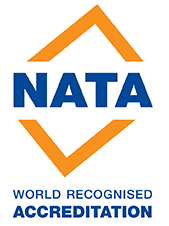联系我们
- 电话:025-8658 3475
- 传真:025-8658 3457
- 邮箱:info@fire-test.com
- 网址:www.cprce.com
- 地址:中国江苏省南京市江东中路118号德盈大厦16F
Asbestos Testing to Australian Standard AS 4964 A NATA accredited laboratory
来源:线缆CPR认证服务平台 浏览:620次 发布于:2024-9-10

Samples of material suspected of containing asbestos are first placed within a dust cabinet and viewed under a stereomicroscope between 10x – 40x magnification to make an effort in testing fibres of all types. The morphology of the fibres provides a clue as to what type of fibres it may be, chrysotile asbestos, amosite asbestos, crocidolite asbestos, actinolite asbestos, anthophyllite asbestos; or non asbestos fibre types such as organic fibres or synthetic mineral fibres (SMF).
The suspected asbestos fibres are then extracted by breaking material apart or using needles and tweezers. The fibres to be tested are then mounted on microscope slides with oils of different refractive indexes, depending on the type of asbestos is suspected and then viewed under polarised light.
Polarised Light Microscopy – Following the Australian Standard for Asbestos Testing
The suspected asbestos fibres are viewed under polarised light microscopy which provides unequivocal identification through the viewing conditions of:
Crossed Polars (XP)
Plane Polarised Light (PPL)
Dispersion Staining (DS)
Crossed Polars – Testing Asbestos Fibres for Birefringence
The test under crossed polars determines whether the material is crystalline or amorphous and an assessment can be made whether the fibres are asbestiform in nature. Asbestiform describes the morphology of the fibre having a high aspect ratio, splayed ends, occurring in bundles and may have characteristic curvature (in the case of chrysotile asbestos). Birefringence testing is the numerical difference between the highest and lowest refractive index of the fibre. This is observed visually by the “search-light” effect. When at 45 degrees to the vibration plane a fibre with high birefringence will increase in the brightness of the fibre, whereas low birefringence the fibre remains similar to that close to 90 degrees to the vibration plane.
Asbestos fibres will also “disappear” under the microscope when rotated and viewed at 0/90 degree bias, the aspect of this test is termed as extinction. This confirms that the fibre is crystalline in nature.
Consultation hotline of Nanjing SMART Company: +86 25-8658 3475 +86 25 8658 3465
Website: www.hksmartps.com www.cprce.com
Email: info@hksmartps.com
WeChat: Firetesting or 17714189018
...
 苏公网安备 32010502010104
苏公网安备 32010502010104 官方微信
官方微信

